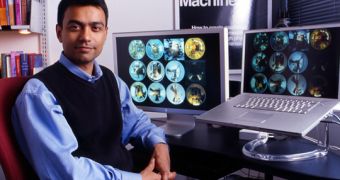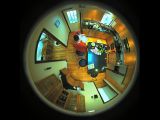They got 11 video cameras, 14 state-of-the-art microphones, they built a temperature-controlled data-storage room in their basement, loaded it with 5 Xserves and a 4.4TB Xserve RAID, backup tape drives as well as robotic tape changers. What is all this for, you ask? To capture "practically every waking moment of their son's first three years" hoping to unravel the mysteries of how children acquire language, Apple Science is reporting.
Deb Roy directs the Cognitive Machines Group at the Massachusetts Institute of Technology (MIT) Media Lab. Rupal Patel, Roy's wife, leads the Communication Analysis and Design Laboratory at Northeastern University. Roy believes that the key to truly understanding how human beings acquire language is "stepping into the shoes of a child." The couple believes this is the most ambitious study ever conducted on how children acquire language, naming it the Human Speechome Project (HSP).
"To (best) understand how something works," he says, "you need to build it ... My ultimate goal is to understand how language works," Roy explains. "But for all of the interest in how children learn language, there's no comprehensive data of even a single child's development," Roy says. "Most researchers rely on speech recordings that cover less than 1.5 percent of a child's complete linguistic experience."
That, of course, is a very small figure for such an important aspect of our lives. "So, from the moment he arrived home from the hospital, Roy and Patel's son has lived under the almost constant observation of the 14 microphones and 11 video cameras that are embedded in the ceiling over every major room of the house," the Apple Science report reveals. "Somewhere around 80 percent of his waking hours at home are being recorded," says Roy. Privacy considerations permit mom, dad and other caregivers to turn off the cameras and microphones using touch panels mounted on the walls of each room, explaining the remaining 20 percent of non-taped time.
"Our work makes substantial use of both graphics and scientific computation, and we prefer the reliability of UNIX-based systems. Consequently, we planned for Mac OS X to be the primary development platform for the Speechome project's end-user applications," says Roy.
There's even an "oops" switch mounted in each room (marked with a giant exclamation point) which family members use in order to erase embarrassing moments.

 14 DAY TRIAL //
14 DAY TRIAL // 
